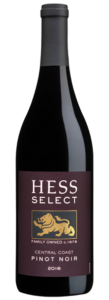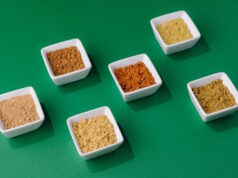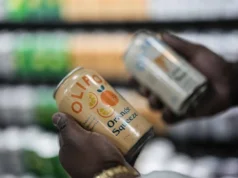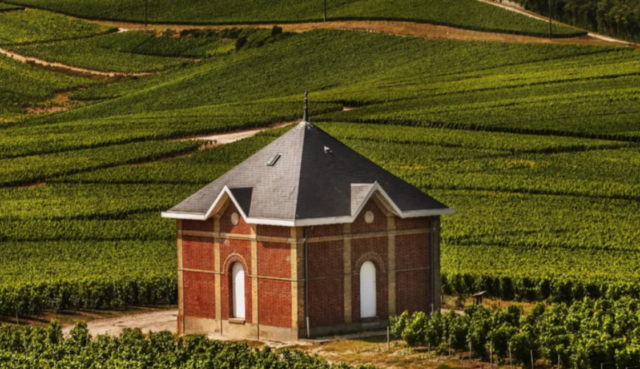
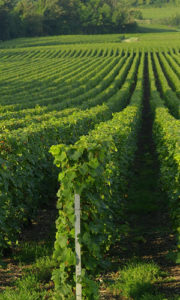
Champagne sales have enjoyed seven years of steady growth with the U.S. sitting in the second spot of bottles sold worldwide behind the United Kingdom. Among champagne producers, Moet & Chandon is the industry leader worldwide — they trail Veuve Clicquot in the U.S. market.
Owned by LVDH, Moet & Chandon is celebrating the 150th anniversary of their ubiquitous and best-selling Imperial Brut this year. Imperial Brut is the upgraded successor to the retired White Star brand that was marketed in the U.S. for many years. Slightly drier, the Imperial Brut offers a moderately priced introduction to real French champagne.
Although international accords have outlawed the use of the descriptor champagne to any sparkling wines produced outside the defined Champagne region, Americans still routinely use the term to describe any sparkling wine.
We recently met with Marie-Christine Osselin, quality director for Moet & Chandon, to learn more about the venerable champagne house and to taste some of their products.
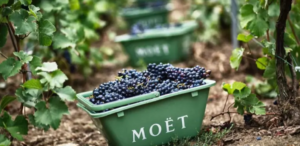
Tasting the raw juice is the first step conducted by the Moet & Chandon’s 10 winemakers and Marie-Christine Osselin to decide the blend of pinot noir, pinot meunier and chardonnay that ultimately create the final champagne. Moet & Chandon only uses stainless steel in the winemaking process so as to protect the “fresh fruit impression of natural grapes,” according to Ms. Osselin.
The complex nose and flavors of Moet & Chandon’s champagne originate from this fresh juice and aging on the lees to create this very attractive beverage, no wood needed.
We were very impressed with the quality of Moet & Chandon’s champagnes and following are our tasting notes.
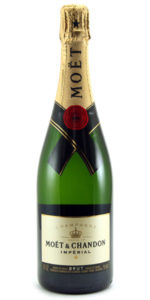
Moet & Chandon Imperial Brut ($40-60) is the producer’s flagship champagne. It is made up of 30-40 percent each of pinot noir and pinot meunier with the balance chardonnay created from over 100 base wines of which 20-30 percent are reserve wines. Ripe apple and pear notes dominate with a distinct lees note to add complexity. Great by itself or as an accompaniment to many foods that traditionally match with white wine.
Moet & Chandon Rose Imperial Brut N/V ($50-70) is made up of mostly pinot noir (40-50 percent) with 30-40 percent pinot meunier and 10-20 percent chardonnay. The pink color comes from the addition of a bit of still red wine made from the pinot noir and pinot meunier. A slightly bolder champagne than the Imperial Brut with a distinctive note of cherries accenting the base champagne. Very appealing and a match for bolder cuisine.
Moet & Chandon just released a new vintage champagne along with a rosé version to succeed the currently available 2009 vintage. According to Osselin, the terrible 2012 growing year was afflicted with frost, hail, and too much rain. A hot dry August saved the vintage, although yielding 40 percent fewer grapes than normal.
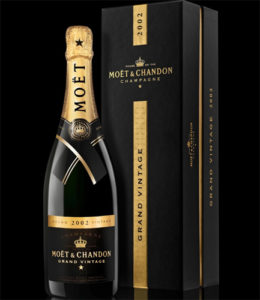
The 2012 Moet & Chandon Grand Vintage ($80-$100) is drier than the Imperial Brut and spent 5 years on the lees and, according to Osselin, it should age and gain complexity for the same number of years as it spent on the le — about 5-7 years. Very fresh and delicate, it is 41 percent chardonnay, 33 percent pinot noir and 26 percent pinot meunier.
The 2012 Moet & Chandon Grand Vintage Rosé ($85-$105) again is also drier than the Imperial brut rosé and exhibits a nice fruitiness with light cherry notes.
We also sampled the 2002 Moet & Chandon Grand Vintage Collection ($140 approximately). Majority chardonnay (51 percent) with 26 percent pinot noir and 23 percent pinot meunier. Just disgorged in 2017, this incredible champagne spent 15 years on its lees! Amazing complexity with an enticing mature nose with deep fruity flavors and baked apple dominating on the palate.
MORE BUBBLES
Summer is a great time to enjoy sparkling wine and champagne, especially if there is something to celebrate. Here are some other bubblies we recommend:
-
Champagne Palmer & Co. Brut Reserve Champagne Palmer & Co. Brut Reserve ($60). Year after year this Champagne house produces reliable wines. This non-vintage brut reserve has pear and citrus notes. It spends four years on the lees.
- Piper-Heidsieck Champagne Brut ($45). Dominated by about 60 percent pinot noir, this lovely champagne offers abundant fruit with pear and citrus elements. A relative bargain price for classy champagne.
- VolageCremant de Loire Rosé ($30). From the Loire Valley of France, this unique sparkling wine is made from cabernet franc grapes and has fresh strawberry and raspberry flavors.
- Sea Smoke Sea Spray 2014 ($80). This vintage sparkling wine is made entirely from estate-grown pinot noir grapes grown in Santa Rita Hills. Complex with fresh pear flavors and a dash of minerality. Lots of finesse.
- Scharffenberger Brut Rosé Excellence ($30). From California’s Anderson Valley, this reasonably priced sparkling wine shows off strawberry and raspberry flavors and balanced acidity.
WINE PICKS
-
Hess Select Pinot Noir Central Coast 2016 Hess Select Pinot Noir Central Coast 2016 ($20). This is an outstanding pinot noir for the price. Deep rich ripe cherry notes dominate this 100 percent pinot noir with a distinctive hint of violets and spice. Pinot noir lovers take notice.
- Hess Select Cabernet Sauvignon North Coast 2015 ($20). Another value from the Hess family this cabernet sauvignon presents as a medium bodied food wine that should match up with most red meat or even poultry dishes well. Blackberry and cherry dominate this 79 percent cabernet sauvignon blend that also includes petite sirah, malbec, syrah, merlot and zinfandel.
- P. Vin Pinot Noir Santa Lucia Highlands Rosella’s Vineyard 2014 ($49). This pinot noir is a classy deep and rich bold style red wine that features plum, cherry cola and root beer notes. Full bodied and fantastic!
CORRECTION
The correct price of the 2015 Tenuta Luce that was reviewed in last week’s column is $135.




